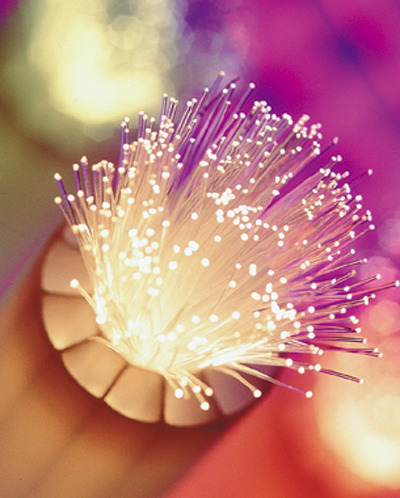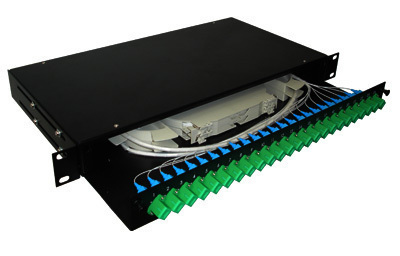Fiber optic technology makes use of light to carry digital signals via optical cables. Fiber optic cables are very thin glass wires made from extremely pure optical glass. This technology is based on the concept of light reflection. In the case of fiber optics technology, light carrying digital signals is reflected inside the optical cable to transfer information. Total internal reflection is the principle behind the success of this technology.

Fiber Optics: Glass Anatomy
A fiber optic cable is basically made-up of three parts: the core, the cladding and the buffer coating. The core is made up of extremely pure optical glass that could be bent. The core serves as the passageway for signals that are in the form of light. The cladding keeps the light inside the core. Following the principle of total internal reflection, the cladding keeps light signals inside the core by bouncing it back and forth. The buffer coating serves as the protection on the cable from external elements which may damage the optical fiber. The buffer coating is usually made from plastic.
Optical fibers come in two major types that mainly vary in core size. A multi-mode fiber has a bigger core diameter compared to a single-mode fiber. Optical fibers are bundled in hundreds or in thousands to make up an optical cable. A jacket protects the fiber optic cable from external elements.
Why Fiber Optics?
There are a lot of reasons why fiber optics is preferred by telecommunications companies. The main reasons behind this choice are cost, efficiency and convenience.
Fiber optics glass cost less as compared to copper wires. Moreover, fiber optics is efficient because of a number of reasons. Using light as the mode to carry information brings about a lot of advantages. The most noticeable advantage is speed of data transfer. This is not very surprising since light travels faster than any existing wave. Light signals also degrade lesser than signals passing through copper conductors. Plus, light signals require lesser power to be transmitted.
The material used in fiber optics makes it very convenient to use. Optical fibers are thinner, more light weight and more flexible than copper wires. This makes it easier to carry, bundle and set up. Aside from this, optical fibers do not heat up and are non-flammable.
Fiber Optics Technology
Fiber optics works in the same way as any conventional information transfer system. You will need something to transmit the signal, carry the signal and something to receive as well as decode the signal.
A fiber optic relay system is composed of four main components; the transmitter, the optical fiber, an optical generator, and an optical receiver. The transmitter gathers and encodes the information and produces the primary signal through the optical fiber. The optical generator acts like a step-up transformer in electrical systems. It magnifies the signal to make up with signal degradation. And lastly, the receiver decodes and receives the information and converts it to a form that could be recognized by the receiver.




vikram
SIr,
I have a doubt about in optical fibre manufacturing.Due to formation of bubbles in glass preform,BFDV(bare fibre diameter variation) comes while drawing.Can you give the exactly reasons and reaction between bubbles and BFDV?